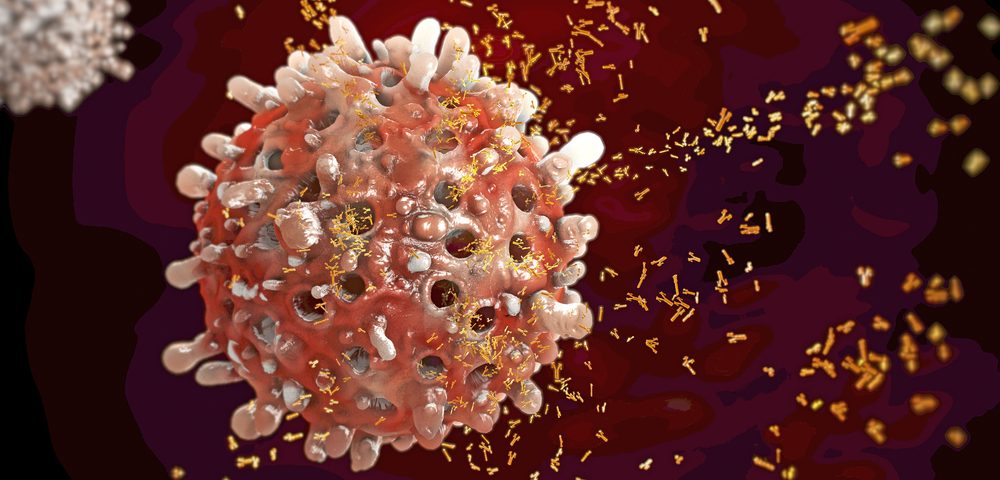Treating systemic juvenile idiopathic arthritis (sJIA) with Actemra (tocilizumab) can modify the clinical and laboratory features of macrophage activation syndrome (MAS) — a severe, potentially life-threatening complication of rheumatic diseases — and complicate its diagnosis, a study found.
As such, the researchers said, it is not appropriate to use standard MAS classification criteria when evaluating the possibility of this disorder in sJIA patients on Actemra.
“Care must be taken to not underdiagnose MAS,” the investigators said.
The study, “Tocilizumab modifies clinical and laboratory features of macrophage activation syndrome complicating systemic juvenile idiopathic arthritis,” was published in the journal Pediatric Rheumatology.
MAS is a severe complication of rheumatic disease that typically presents with widespread inflammation and symptoms such as fever, hepatosplenomegaly, lymphadenopathy, reduced levels of blood cells, and impaired liver function. Hepatosplenomegaly is a concurrent enlarged liver and spleen, while lymphadenopathy is a disease of the lymph nodes characterized by swelling.
Most commonly seen in people with systemic sJIA, MAS affects approximately 10% of such patients. Subclinical MAS — in which the disorder is present without producing overt symptoms — may occur in as many as 30 to 40% of people with active sJIA, the researchers said.
Tocilizumab, used to treat sJIA, is an antibody that blocks interleukin-6, a protein that regulates inflammatory responses. It is marketed as Actemra in the U.S. by Genentech and in Japan by Chugai Pharmaceutical, and as RoActemra in Europe, by Roche.
Despite its reported high efficacy in sJIA, recent studies have revealed that treatment with Actemra may complicate the diagnosis of MAS in these patients. Actemra’s use can modify MAS’ clinical symptoms and laboratory findings. It also may complicate the distinction between sJIA-associated MAS and sJIA flares.
Now, a team of Japanese researchers sought to determine the influence of Actemra on sJIA-associated MAS. Their goal was to assess whether the 2016 American and European classification criteria of MAS is a reliable way to diagnose this condition in people with sJIA taking Actembra.
The study compared 12 patients on Actemra (average age 8.5 years) with 18 untreated participants (average age 5.5 years). Among those being treated, only two were diagnosed with full-blown MAS. The remaining 10 individuals were diagnosed with possible MAS. In turn, among the 18 untreated patients, 10 had full-blown MAS and eight possible MAS.
Full-blown MAS was defined as the time of most severe MAS. Meanwhile, possible MAS referred to characteristic laboratory features without clinical features of MAS, or prevention of full-blown MAS with early treatment.
The results showed that, in comparison with no treatment with the medication, use of Actemra was associated with lower risk of having fever. It also was linked to reduced levels of ferritin — a blood protein that contains iron and indicates levels of iron storage in the body — platelets, a type of fat called triglycerides, and fibrinogen, a protein involved in blood clot formation. In addition, treatment with Actemra was associated with reduced levels of the inflammation marker C-reactive protein.
Those with possible MAS and treated with Actemra showed more differences compared with no treatment than patients with full-blown MAS also being treated. Notably, as only two participants taking Actemra had full-blown MAS, no statistical comparison could be made, the team said.
“Taken together, we found significant differences in the key laboratory parameters associated with MAS in TCZ [tocilizumab, Actemra]-treated patients,” the researchers said.
The investigators then determined the validity of using the 2016 classification criteria of MAS in patients treated with Actemra.
They found that only 25% of treated patients were diagnosed with MAS according to these criteria, a significantly lower percentage than the 83.3% of untreated patients.
This discrepancy in diagnostic accuracy is due to the absence of fever or insufficient increases in ferritin compared with the untreated patients, the researchers said.
“TCZ could modify the clinical and laboratory features of s-JIA-associated MAS,” the team said. “When evaluating s-JIA patients while treated with TCZ, it is not applicable to use MAS classification criteria. Care must be taken to not underdiagnose MAS based on MAS classification criteria.”

